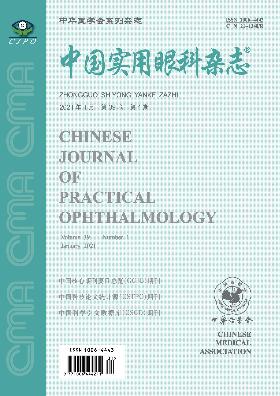飞秒激光辅助硬晶状体核性白内障超声乳化术临床疗效分析
引用次数: 0
摘要
目的比较飞秒激光辅助超声乳化术与传统超声乳化术治疗III级和IV级晶状体核性白内障的临床疗效。方法回顾性研究168例(182只眼)核硬度为III级和IV级的患者,根据手术方法的不同分为飞秒组和传统组。记录角膜核硬度、累积耗散能(CDE)、最佳矫正视力(BCVA)、角膜内皮细胞密度、计算角膜内皮细胞损失率、手术性散光(SIA)及并发症。结果飞秒组术后1周、1个月、3个月的BCVA均优于传统组。对于III级核,飞秒组术后1个月和3个月角膜内皮细胞损失率均低于传统组(P <0.05),对于IV级核,两组间差异无统计学意义。对于III级核,飞秒组CDE值较传统组降低47.6%。对于IV级核,飞秒组CDE值大于传统组,但差异无统计学意义。飞秒组SIA值低于传统组(P <0.05)。结论飞秒激光辅助超声乳化术术后视力优于传统超声乳化术。飞秒激光辅助超声乳化术减少了手术引起的散光。对于III级核性白内障患者,飞秒激光辅助超声乳化术可降低超声乳化能,降低角膜内皮细胞损伤。对于Ⅳ级核性白内障患者,两种手术方式的CDE值和角膜内皮细胞损失率无显著差异。关键词:飞秒激光;白内障;超声乳化;角膜内皮本文章由计算机程序翻译,如有差异,请以英文原文为准。
Clinical efficacy analysis of femtosecond laser-assisted phacoemulsification in hardness lens nucleus cataract
Objective
To compare the clinical efficacy of femtosecond laser-assisted phacoemulsification and traditional phacoemulsification in grade III and grade IV hardness lens nucleus cataract.
Methods
In this retrospective study, 168 patients (182 eyes) whose nucleus hardness was grade III and grade IV were divided into femtosecond group and traditional group according to different operation methods. Nucleus hardness, cumulative dissipated energy (CDE), best corrected visual acuity (BCVA), corneal endothelial cell density, calculate corneal endothelial cell loss rates, surgically induced astigmatism (SIA), and complications were recorded.
Results
The BCVA of femtosecond group at 1 week, 1 month and 3 months after operation were better than that in traditional group. For grade III nucleus, the corneal endothelial cell loss rates at 1 month and 3 months after operation of femtosecond group were lower than that in traditional group (P <0.05), for grade IV nucleus, there was no significant difference between the two groups. For grade III nucleus, the CDE value in femtosecond group was reduced by 47.6% than the CDE value in traditional group. For grade IV nu-cleus, the CDE value in femtosecond group was larger than that in traditional group, but there was no significant difference. The SIA value in femtosecond group was less than that in traditional group(P <0.05).
Conclusions
The postoperative visual acuity of femtosecond laser-assisted phacoemulsification is better than that in traditional phacoemulsification. Femtosecond laser-assisted phacoemulsification led to less surgically induced astigmatism. For grade III nucleus cataract patients, femtosecond laser-assisted phacoemulsification can reduce ultrasonic emulsification energy and lower the injury of corneal endothelial cell. For grade Ⅳ nucleus cataract patients, there is no significant difference in the CDE value and the corneal endothelial cell loss rate between the two operation methods.
Key words:
Femtosecond laser; Cataract; Phacoemulsification; Corneal endothelium
求助全文
通过发布文献求助,成功后即可免费获取论文全文。
去求助
来源期刊
自引率
0.00%
发文量
9101
期刊介绍:
China Practical Ophthalmology was founded in May 1983. It is supervised by the National Health Commission of the People's Republic of China, sponsored by the Chinese Medical Association and China Medical University, and publicly distributed at home and abroad. It is a national-level excellent core academic journal of comprehensive ophthalmology and a series of journals of the Chinese Medical Association.
China Practical Ophthalmology aims to guide and improve the theoretical level and actual clinical diagnosis and treatment ability of frontline ophthalmologists in my country. It is characterized by close integration with clinical practice, and timely publishes academic articles and scientific research results with high practical value to clinicians, so that readers can understand and use them, improve the theoretical level and diagnosis and treatment ability of ophthalmologists, help and support their innovative development, and is deeply welcomed and loved by ophthalmologists and readers.

 求助内容:
求助内容: 应助结果提醒方式:
应助结果提醒方式:


